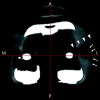Intra- and inter-observer reliability of implant positioning evaluation on a CT-based three-dimensional postoperative matching system for total knee arthroplasty
- PMID: 33865360
- PMCID: PMC8053298
- DOI: 10.1186/s12891-021-04228-2
Intra- and inter-observer reliability of implant positioning evaluation on a CT-based three-dimensional postoperative matching system for total knee arthroplasty
Abstract
Background: The evaluation of postoperative total knee arthroplasty (TKA) alignment mainly relies on measurement data obtained from plain radiographs. The aim of this retrospective observational study was to document the intra- and inter-observer reliability in assessment of TKA component positioning after surgery using a three-dimensional (3D) computed tomography (CT) image matching system.
Methods: Fourteen knees from 14 patients who received primary TKA were included, and images were analyzed by blinded readers not associated with the surgeries. The examiner digitized the reference points according to defined landmarks, and the designated size component was superimposed to the 3D reconstructed CT model for measurement. In addition to the evaluation of implant position against the coronal and sagittal lower limb mechanical axes that were defined based on bony landmarks, implant position against axes connecting implant-based reference points that are easier to indicate was evaluated.
Results: The overall intra- and inter-observer reliabilities determined by the intraclass correlation coefficients (ICC) of the implant alignment measurement for both femoral and tibial components were good (ICC > 0.60), except in the direction of femoral flexion and extension, for both mechanical and implant-based axes. The difference between implant alignment measurements according to the traditional mechanical axis and the implant-based axis ranged between means of 0.08o and 1.70o and were statistically significantly different.
Conclusions: The postoperative evaluation of implant position in the coronal and sagittal planes using 3D-CT image matching is reliable and has good reproducibility except for the sagittal alignment assessment of the femoral component. The measured implant position according to the traditional mechanical axis and the implant-based axis were slightly but significantly different.
Keywords: 3D-CT; Implant position; Inter‐observer reliability; Intra‐observer reliability; Postoperative evaluation; Total knee arthroplasty.
Conflict of interest statement
Ryuichiro Akagi and Toshihiro Odera financially supported by Zimmer Biomet Inc. (Warsaw).
Figures




Similar articles
-
Intra- and interobserver reliability and agreement in three-dimensional computed tomography measurements of component positions after total knee arthroplasty.Knee. 2019 Oct;26(5):1102-1110. doi: 10.1016/j.knee.2019.07.001. Epub 2019 Jul 21. Knee. 2019. PMID: 31340892
-
Partially loaded plain radiographic measurement to evaluate rotational alignment in total knee arthroplasty.Int Orthop. 2016 Dec;40(12):2519-2526. doi: 10.1007/s00264-016-3247-7. Epub 2016 Jul 22. Int Orthop. 2016. PMID: 27447464 Clinical Trial.
-
Preoperative planning of total knee arthroplasty: reliability of axial alignment using a three-dimensional planning approach.Acta Radiol. 2022 Aug;63(8):1051-1061. doi: 10.1177/02841851211029076. Epub 2021 Jul 6. Acta Radiol. 2022. PMID: 34229468
-
Intra- and postoperative assessment of femoral component rotation in total knee arthroplasty: an EKA knee expert group clinical review.Knee Surg Sports Traumatol Arthrosc. 2021 Mar;29(3):772-782. doi: 10.1007/s00167-020-06006-4. Epub 2020 Apr 30. Knee Surg Sports Traumatol Arthrosc. 2021. PMID: 32350578
-
What is the optimal alignment of the tibial and femoral components in knee arthroplasty?Acta Orthop. 2014 Sep;85(5):480-7. doi: 10.3109/17453674.2014.940573. Epub 2014 Jul 18. Acta Orthop. 2014. PMID: 25036719 Free PMC article. Review.
Cited by
-
A Three-dimensional Comparison of Pre- and Post-component Position in a Series of Off-label Robotic-assisted Revision Total Knee Arthroplasties.Arthroplast Today. 2023 Dec 27;25:101310. doi: 10.1016/j.artd.2023.101310. eCollection 2024 Feb. Arthroplast Today. 2023. PMID: 38229867 Free PMC article.
References
-
- Ritter MA, Faris PM, Keating EM, Meding JB. Postoperative alignment of total knee replacement. Its effect on survival. Clin Orthop Relat Res. 1994;:153–6. - PubMed
Publication types
MeSH terms
LinkOut - more resources
Full Text Sources
Other Literature Sources
Medical

